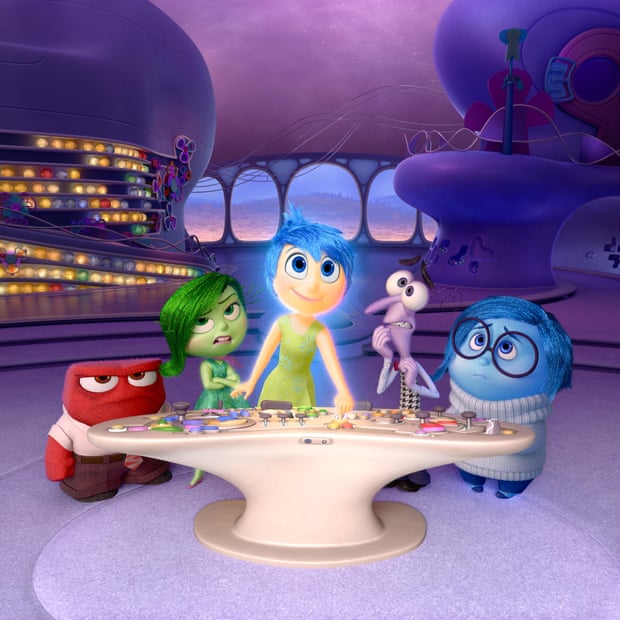Do you feel lucky? Well, do you, punk? If you do, it could be because some supernatural busybodies are manipulating you from the comfort of their hi-tech control rooms, in between sips of coffee from the staff canteen. When they press one button, you find a £10 note. When they press another, you fall down a manhole.
That, at least, is the premise of Luck, an Apple+ cartoon premiering in August. The film reveals that human affairs are influenced from the Land of Luck – although, judging by the trailer, “The Office Complex of Luck” would be more accurate. Hundreds of leprechauns and rabbits (and a black cat voiced by Simon Pegg) bustle along the corridors of a shiny business campus, delivering parcels, reading memos, and reporting to their smartly suited boss, a dragon voiced by Jane Fonda.
The idea that something as intangible as luck might be governed by otherworldly workers is a fun one – and, 20 years ago, it might have seemed like an original one, too. But in 2022, the contrast between the ethereal and the boringly bureaucratic is as much of a cartoon cliche as zany talking animals. Take a mysterious, metaphysical concept, add a crowd of bean-counters and pen-pushers, and you’ve got yourself a film.
To be fair, this sort of comedy has an illustrious history, ranging from Powell and Pressburger’s A Matter of Life and Death (in which Peter learns that heaven has filing clerks) to Tim Burton’s Beetlejuice (in which the newly deceased Maitlands visit an afterlife information desk). In animation, the gamechanger was Monsters, Inc. in 2001 – and it’s still one of Pixar’s most delightful cartoons. You can’t beat the sight of furry and/or slimy creatures cheerfully clocking in at a factory where they bottle children’s screams in yellow canisters. Ten years later, a similar combination of the industrial and the magical did the trick in Aardman’s Arthur Christmas. There was a pleasing logic to the suggestion that Santa’s elves would need desk-top computers and digital displays, and yet the film retained a sprinkling of traditional festive wonder.
In the decade since, though, the same big-business bric-a-brac has been used in cartoon after cartoon: the conveyor belts and gangways; the announcements on tannoys, and the consoles studded with levers and dials; the monitors showing individual houses, and the wall-sized screens showing a map of the Earth. There’s often a cityscape stretching beyond the centre of operations, and there’s often an unwitting human who bumbles in and messes up an otherwise foolproof system. And there are filing cabinets. So many filing cabinets.
These incorporeal-corporate set-ups have become every American cartoon’s answer to life’s trickiest questions. Where do babies come from? According to Storks, the storks involved have collars and ties and productivity graphs. On the other hand, The Boss Baby contends that the babies run the show from their cubicles, where they study pie charts and dream of corner offices.
But where do children’s personalities come from? Soul gives the standard corporate headquarters a new-age makeover, but it still has seminars, name tags, a grumpy accountant, and yes, filing cabinets. In Inside Out, moods and memories are overseen by a team of colleagues with a dashboard, a clipboard, and a complicated data storage process. And in Coco – much like A Matter of Life and Death and Beetlejuice – the Land of the Dead has managers, regulations, and filing cabinets, too. Crucially, all of this mystical mucking about is suspiciously godlike, but specific deities and religions are never mentioned.

Then there are the less highfalutin examples. Ever wanted to know what goes on inside a beehive, an arcade game or the internet? Bee Movie, Wreck-It Ralph and The Emoji Movie agree that they’re full of wage slaves doing their nine-to-five jobs.
If any one person is behind this trend, it’s Pete Docter, who directed Monsters, Inc., Inside Out, and Soul, and who helped define what a Pixar cartoon could be. (It can’t be a coincidence that Luck is the first film from Skydance Animation – and that the studio’s head of animation is Pixar’s former supremo, John Lasseter.) Docter’s own cartoons come across as sincere attempts to be truthful about abstruse philosophical conundrums. But in most of the films directed by his imitators, all the talk of quotas and promotions and performance reviews seems like a lazy gimmick, and a pretty depressing one at that. As charming as these cartoons can be, their underlying message is that the best way to facilitate anything – birth, death, joy, Christmas presents – is to have hordes of diligent employees devoting themselves to one monolithic company.
You can see why that message might appeal to executives at Disney, Pixar, DreamWorks and Skydance, but I hope the trend is coming to an end. I’m not feeling lucky, though. Pixar’s 2023 release, Elemental, is set “in a city where fire, water, land, and air residents live together”. Don’t be surprised if there are filing cabinets in there somewhere.

